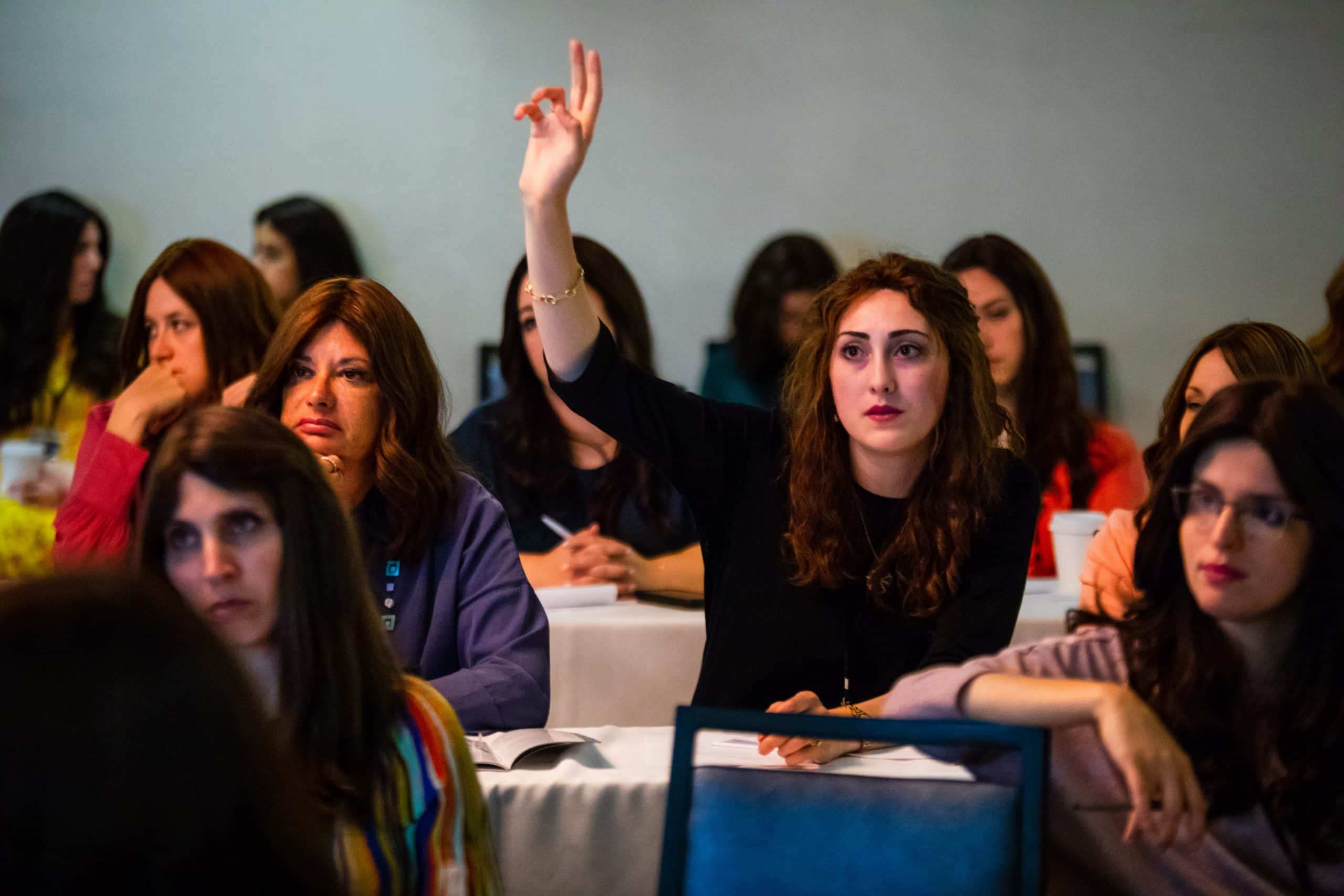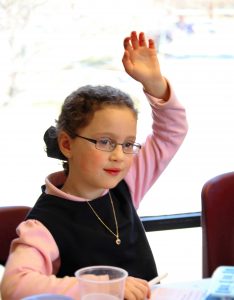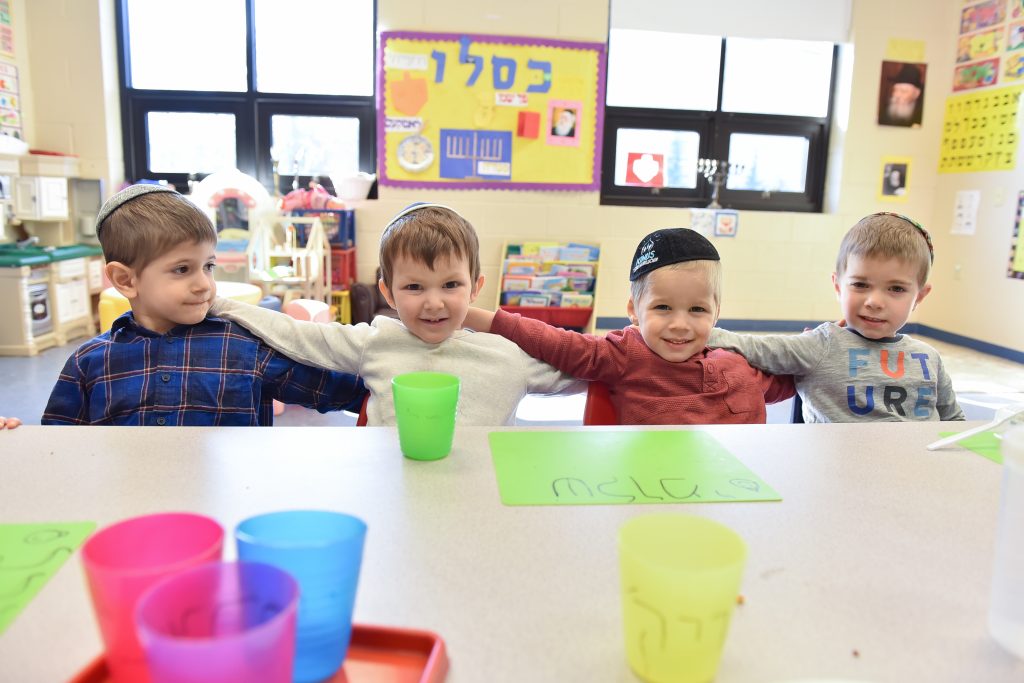
Is teaching an art, a science, or a calling?
The simple answer is, all three.
We have all met the “born” teacher, who has been playing school since age five. If you teach, you know the experience of a lesson that seems to teach itself, as you orchestrate and respond and lose yourself in the thrilling creative endeavor of teaching. And certainly, there are matters of discretion and sensitivity, matters of the heart, that no training course can ever teach you.
However, my experience has been that the “born” teacher usually has a particular aspect of teaching that comes naturally, and motivates her to pursue teaching, but this is not the whole picture. For example, a teacher might have found that they were a “natural” at riveting children’s attention in camp or Mesibos Shabbos programs with masterful storytelling and dramatics. However, a teacher who relies on her ability to hold a class’s attention by simply walking into the classroom and talking – however masterful the delivery – is compromising student learning by making teaching one-directional. The students may be riveted, but do they understand? They may be impressed and inspired by the material you presented, but have they made it their own?
Another kind of “born” teacher has a way with children. She is overflowing with love and understanding for the precious Neshamos in her care. She can make a student’s eyes shine and her heart sparkle with the right word at the right time, and by reaching out to a child who needs it. However, can this teacher with a heart of gold command enough respect and discipline in the classroom to truly achieve her objectives? Can she organize a lesson plan to effectively convey her deeply held values, or is her rapport mostly felt at recess or in extracurriculars?
Teaching is certainly a spark. There must be passion, and there must be love – whether for the children, the Torah being taught, or the creative art of teaching (and hopefully for all three!). This is what motivates a teacher on the long upward climb to achieving mastery in the classroom. But clearly, it is just the first step. 
“Happy is your lot that Hashgacha Ha’elyona (Divine Providence) has placed you in the most fortunate position of one engaged in Chinuch, which draws near the hearts of Jewish Children to our Father in Heaven. The great reward for this defies description.” (Igros Kodesh, vol. 17, p. 313)
Teaching is also a science. It is comprised of many micro-skills that can, and should, be learned. If a teacher’s aim walking into the classroom each day is to inspire students with pride in their Yiddishkeit and the knowledge they need to support that, there are myriad of tiny moments that can be orchestrated in order to support that goal:
How does the teacher enter the classroom? Where should the students sit? Which lesson objective to aim for each day? What to do for the students who are more able and need more stimulation? How to support the child who is falling behind? What kinds of routines preclude disruptions, and if disruptions occur, how to respond? These are all questions that a responsible teacher, however passionate, needs to ask. And these are all questions that have answers.
The answers might not be one size fits all. A routine that works for one classroom might not work for another, and a disciplinary approach that fits one teacher might not fit another one. However, there are so many tools that teachers need to have and know about in order to be able to choose the best course of action for their classrooms, each day. There is a practical side to teaching that can go very far in enabling an idealistic teacher to meet her goals.
The Rebbe spoke and wrote much about teacher training, and even organized a weekly teacher training program for young men in Kollel. Similarly, Yeshivas Tomchei Temimim, under the auspices of the Rashag, organized a teacher training course taught by a frum professor, Dr. William Brickman, and the syllabus included the fundamentals of pedagogy, child psychology, lesson planning and so forth. The Frierdiker Rebbe as well had begun organizing such programs and encouraging educators to attend.
In numerous letters, the Rebbe expressed in quite strong terms the need for teacher training to be organized in appropriate settings for Chabad teachers. It does not need to take years of training, and certainly does not require going to college, the Rebbe emphasized – just a few months of accelerated learning to get the tools of the trade. Even experienced teachers should participate in periodic training, the Rebbe maintained, because there is always something new to learn. The Rebbe also very much encouraged organizing and participating in teacher training opportunities during summer vacation.
“An educator requires specific preparation in order to be fit to teach and to guide, and in order that his teaching and guidance should bring about the desired effect. Not everyone who wants to call himself a teacher is able to take upon himself such a great responsibility….” (Sefer Hasichos of the Frierdiker Rebbe, 5703-5705, p. 219)
 Teacher training does not chas v’shalom replace the passion, Yiras Shamayim, and proper perspective a chassidishe melamed needs to have! These prerequisites are the “make it or break it” of teaching. However, once these things are in place, the Rebbe asked and expected that a chassidishe melamed learn tools in an appropriate setting to make their teaching the best that it can be, to reach the hearts and minds of each of their students. (For more clarity as to the Rebbe’s approach on Chinuch, see the publication “Revisiting Education,” which is available on mymef.org.)
Teacher training does not chas v’shalom replace the passion, Yiras Shamayim, and proper perspective a chassidishe melamed needs to have! These prerequisites are the “make it or break it” of teaching. However, once these things are in place, the Rebbe asked and expected that a chassidishe melamed learn tools in an appropriate setting to make their teaching the best that it can be, to reach the hearts and minds of each of their students. (For more clarity as to the Rebbe’s approach on Chinuch, see the publication “Revisiting Education,” which is available on mymef.org.)
Boruch Hashem, today we have such opportunities for teacher development to choose from. For example, I work at the Menachem Education Foundation, where professional development for teachers and school leaders takes place during the summer and throughout the year, both in person and online. At MEF, when teaching a concept in pedagogy, we bring the sources in Torah and Chassidus to show what we are aiming for and why this is important. Only then do we work with the specific tools and techniques that have been tried and proven to bring this ideal home.
For example, every educator knows and values the principal of “chanoch lena’ar al pi darko”, but grapples with how to run a cohesive classroom for students on multiple levels of learning and ability. Practical tools, such as tiered learning, setting up independent group work, and so forth, have been developed in order to enable us to realize this ideal and reach every student.
In order to fan the passion for teaching, and give it arms and legs with the training and tools that it needs, a person needs to view Chinuch as a calling, and more than that, as a Shlichus. Truly, it is the most challenging job in the world – and the most rewarding, the most important, and the most vital to our community.
There are many individuals who relate that they were told by the Rebbe to pursue Chinuch as a Shlichus. What is the difference between teaching as a Shlichus, and teaching as a job? The Rebbe drew that distinction when R’ Shloma Zarchi asked the Rebbe if by accepting his position as Mashpia in 770 he could be considered a Shliach. The Rebbe answered, “If it is done with mesira unesina” – with utmost devotion and dedication, then yes.
The Rebbe identified Chinuch as an urgent task for our generation, and in one letter wrote that if someone identifies within himself that he is shayach to be a teacher and has that ability, it is his obligation to pursue Chinuch. And even to those who don’t, the Rebbe instructed that every Chossid today must find an area of his life where he can be mechanech and influence others to the extent that he is able.
“In our times, the call to education is in the category of Pikuach Nefesh.” (Igros Kodesh, vol. 8, p. 222)
Teachers are the “noter karmo” – the tenders of Hashem’s garden, and also of the Rebbe’s garden. Teachers are the ones who guard and give over all of our ideals, all of the Torah and Chassidus, the identity and the Emuna, the character building and the self-efficacy, that we want for our children, all of our children. They literally shape the future.
The art, the science, and above all the Shlichus – this what our teachers dedicate themselves to, this is what they embrace with more devotion and self-sacrifice than any other job in the world might call for. Our community needs to view our teachers through this lens, and celebrate and support them as holding the most impactful position in our community. As for the young people who are looking for a way to make their own impact, this is what we need to communicate – the multifaceted, sacred, urgent and precious task that the Rebbe set out for us in the Shlichus of Chinuch.

Mrs. Chanah Rose is a longtime educator and curriculum writer, and the Educational Director of MEF. She can be reached at c.rose@mymef.org.




